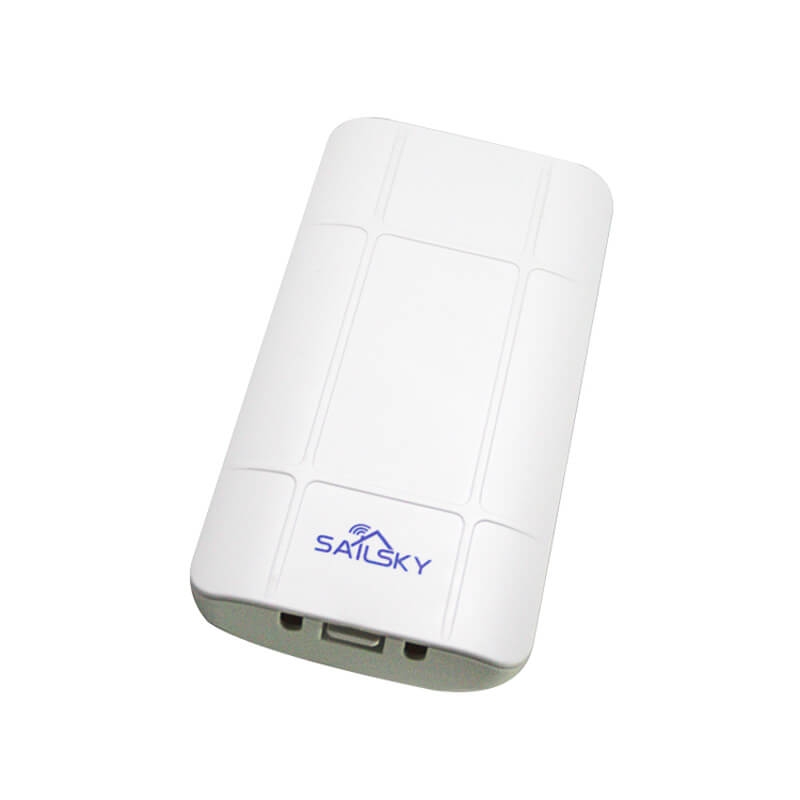Exploring the Benefits of Wifi Bridge Outdoor for Seamless Connectivity
2023.07.19 / By Sailsky
What does the term Wifi Bridge Outdoor mean?
- A device or arrangement that enables the extension or expansion of a Wi-Fi network to outside spaces is called a WiFi bridge outdoor. It is intended to provide wireless communication between interior Wi-Fi networks and desirable outside areas. The word “bridge” designates a device connecting or linking two networks. In this instance, it links existing indoor Wi-Fi networks to objects or locations outside. To allow outdoor devices to join the network, the bridge transmits the Wi-Fi signal from the interior access point or router to those outside.
- An outdoor bridge often has exterior antennae for greater range and coverage and is built to endure various weather conditions. It may offer Wi-Fi access to outside spaces like gardens, patios, swimming pools, parking lots, or far-off buildings. You may expand your Wi-Fi coverage outside your house or workplace, enabling smooth wireless access outside areas by utilizing a Wi-Fi bridge outdoors. It allows gadgets like laptops, smartphones, tablets, and Internet of Things (IoT) devices to connect to the network and access the Internet without extra infrastructure or cable.
Looking at the Advantages of Outdoor WiFi Bridge for Seamless Connectivity:
It is smooth connectivity in outdoor settings; a Wifi Bridge outdoor can provide various advantages. Let’s look at some of these benefits:
- Range Expansion:
Compared to standard indoor WiFi routers, outdoor WiFi bridges are intended to offer a greater range. They can span the distance between two far-flung sites, such as buildings or outdoor spaces. This increased range allows for smooth connectivity across longer distances, resulting in a steady and dependable connection.

- Better Connectivity in Difficult Environments:
It is designed to endure various environmental challenges, including harsh weather, interference from other devices, or physical obstructions like trees or buildings. Using higher-gain antennas and durable construction, it can provide reliable connectivity in difficult outdoor conditions where standard WiFi routers may struggle.
- Seamless Network Expansion:
WiFi bridges may be used to expand an existing network seamlessly. For instance, an outdoor WiFi bridge can provide a wireless connection between two sites if you have a WiFi network in one building and wish to expand it to another adjacent location without laying wires. With the help of these capabilities, the network may be expanded affordably without adding new infrastructure.
- Increased Flexibility and Mobility:
Outdoor WiFi bridges offer flexibility and mobility by enabling wireless connections in outside locations. This is especially useful in situations like parks, outdoor events, construction sites, and temporary settings where wired connections are prohibitive or impossible. You may have dependable access wherever you are with an outdoor WiFi bridge, which boosts convenience and productivity.
- Enhanced Security:
It frequently includes sophisticated security features, including authentication procedures, encryption protocols (such as WPA2/WPA3), and secure administration interfaces. These features help preserve your data’s privacy and security by preventing unauthorized access to your wireless network.
- Cost-effective Alternative:
Setting up outside WiFi bridges might be more affordable than laying cables or constructing specialized infrastructure, particularly when deploying conventional wired connections is difficult or expensive due to the terrain or distance. WiFi bridges save money by removing the need for lengthy cabling, trenching, or additional equipment.
- Scalability:
It is easily expandable to accommodate changing network demands. You can construct numerous bridges to build a mesh network or link several faraway places together and provide smooth connections across a large region. Outdoor WiFi bridges are suited for various applications because of their scalability, including smart cities, industrial settings, university environments, and public areas.
Improved Connectivity in Outdoor Environments with the Use of an Outdoor WiFi Bridge:
By expanding wireless networks’ range and coverage, an outdoor Wi-Fi bridge improves the connection in outdoor settings. Between two or more places, such as buildings, campuses, parks, or sizable outdoor spaces separated by a significant distance, you can establish a dependable and fast internet connection. A WiFi outdoor bridge functions as follows:
- A Wi-Fi bridge connects two independent wireless networks. It establishes a connection to the Wi-Fi network at the primary site (such as a building with an internet connection). It then wirelessly broadcasts the signal to a secondary location (like an outdoor space without direct connectivity). Outdoor Wi-Fi bridges offer long-range connectivity, making it possible to connect across distances that would otherwise be difficult for standard Wi-Fi signals. They employ specialized antennas and amplifiers to increase the wireless network’s range.
- Depending on the configuration, Outdoor Wi-Fi bridges can be set up as point-to-multipoint networks. A bridge links two distinct sites when it is set up in a point-to-point configuration. Still, when set up in a point-to-multipoint configuration, it connects one major location to several secondary locations. For outdoor Wi-Fi bridges to function at their best, a direct line of sight must often be between the primary and secondary sites. Natural obstacles like hills, trees, or buildings may need to improve the signal strength and range. Consider considering different installation alternatives or utilize extra tools like repeaters or mesh networking systems if the line of sight is impeded.
Outdoor Wi-Fi bridge applications:
- It extends Wi-Fi reach to outside spaces such as stadiums, parks, or locations for outdoor events.
- Connecting distant dispersed buildings or workplaces.
- Supplying temporary places with internet connectivity, such as construction sites or outdoor displays.
- It enables connection for applications like smart cities or outside monitoring systems.
It’s important to consider variables like network needs, available bandwidth, signal strength, and climatic conditions while setting up an outside Wi-Fi bridge. To guarantee the best performance and dependability, skilled experts may be required to complete professional installation and configuration.
Conclusion:
A Wifi Bridge outdoor is a terrific method to expand the wireless network in your house or place of business. It helps to connect to exterior spaces like patios and gardens beyond the primary router’s coverage area. Multiple devices may be connected, and it aids in enhancing the connection’s speed and dependability. Our customers love the amazing and secure features of our particularly created product. We provide dependable, strong, secure communications products. Our SAILSKY employs a senior R&D staff that is skilled, experienced, and professional.

